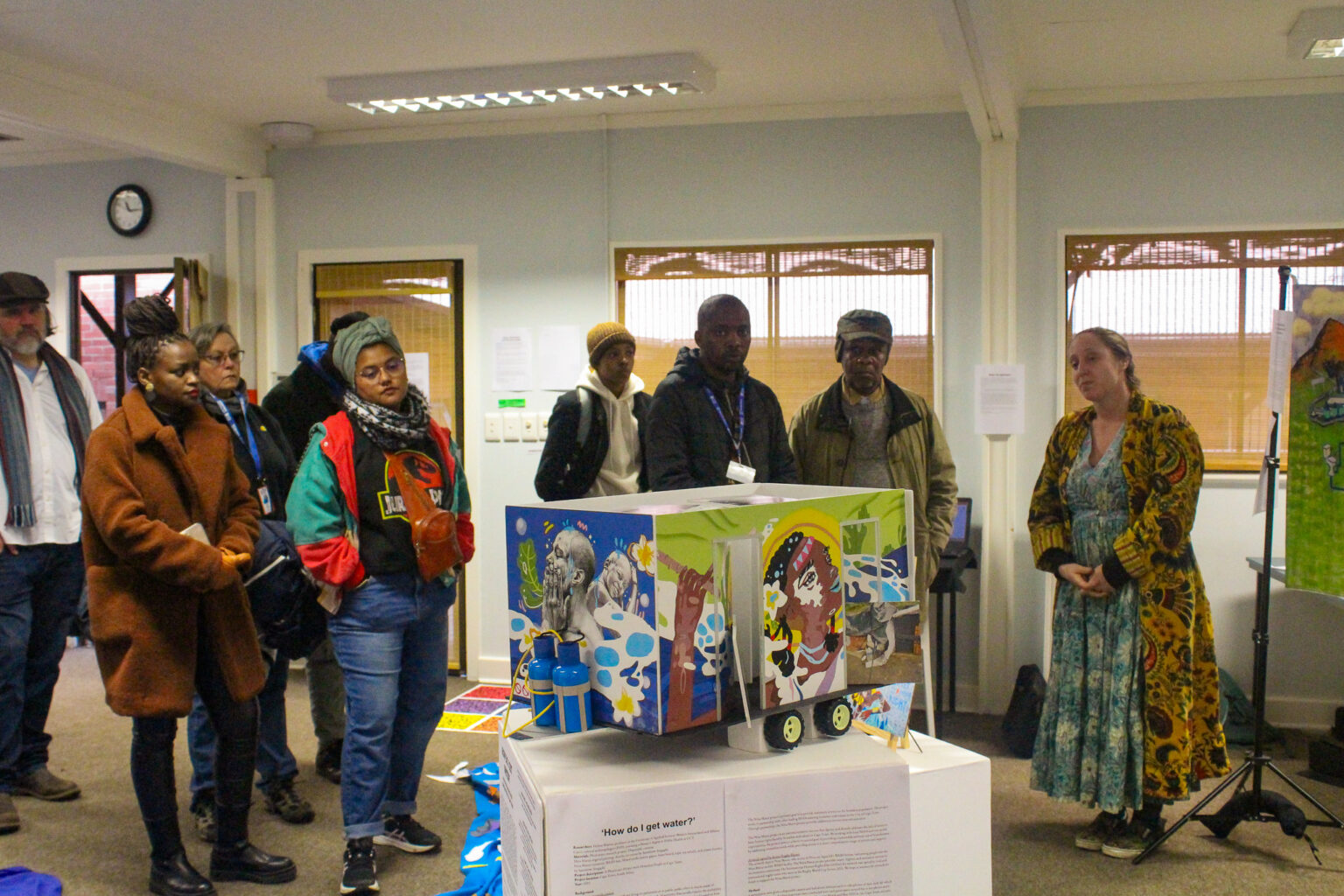By Anoka Latchmiah
As I step into the exhibition space, I am immediately struck by the urgency, and the sense of reverence for nature. Over the duration of the Festival, the Rhodes University’s Environmental Learning Research Centre drastically transforms into a captivating hub of artistic expression and environmental advocacy.
Titled Confluency, the thought-provoking installation – curated by the National Arts Festival – presents a remarkable collaboration between South Africa, Canada, and various African countries.
Visitors are invited to engage with the artworks and contribute their own artistic responses, thus fostering a knowledge exchange and ignition of conversations surrounding water justice. The concept of ‘confluency’ symbolises the meeting point of different ideas, cultures, and experiences. The artwork beautifully reflects this notion. It resembles a river coursing through the space, connecting disparate elements into a cohesive narrative.
One of the exhibition’s most powerful aspects is its connection to Makhanda’s pressing issue of water scarcity. The exhibition serves as a poignant reminder of this ongoing struggle, shedding light on the profound impact that the lack of access to clean water has on communities.
The artworks convey a deep understanding of the pressures facing water justice, many of which were discussed at the 2023 Confluency Conference – which brought together artists, non profits, civil society and nonprofits to engage with research projects.
The exhibition showcases work by diverse communities and researchers from South Africa, Kenya, Uganda, Egypt, and Canada. Their contributions are diverse in style, medium, and perspective, but all share a common goal of change.
A standout installation is a multimedia artwork by Kenyan artist, Nia, titled ‘Flow of Life’. They amalgamate video projections, sculptures, and soundscapes to depict the intricate relationship between humans and water. The piece invites viewers to reflect on their own connection to water and the responsibility we have to protect this vital resource. The visual and auditory elements worked in harmony – evoking a sense of both awe and concern.
Another notable work is the participatory installation titled ‘Ripples of Hope’. The work calls for contributions from visitors’ own artistic responses. The interactive stations provide a few guidelines and materials, encouraging visitors to express their thoughts and emotions regarding water justice. The collective result is a vibrant mosaic of voices, with each painting, drawing, or written message representing a small step toward a more sustainable future.
Overall, Confluency succeeds in its mission to merge art, activism, and environmental consciousness. The exhibition serves as a catalyst for conversations surrounding water justice, by merging diverse perspectives and providing a platform for reflection and engagement. Environmental challenges call for universal conversations, and art is one of the pillars for this communication.
Confluency is on exhibition at the Rhodes University Environmental Learning Research Centre until 2 July


